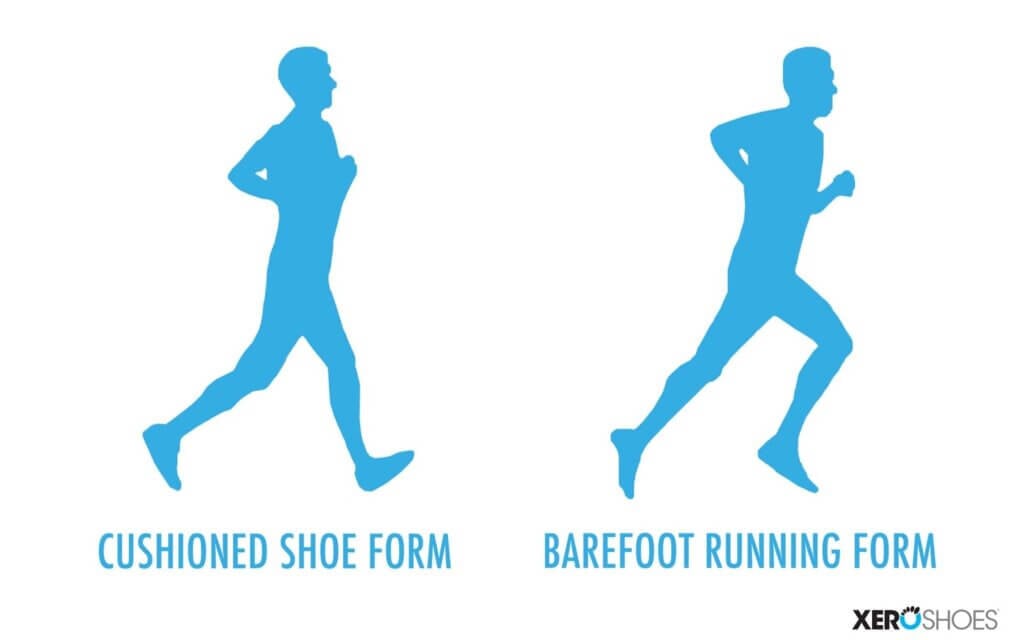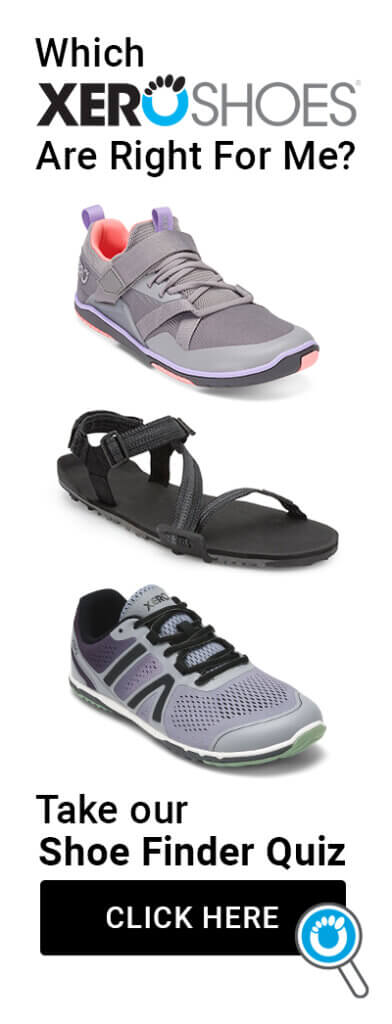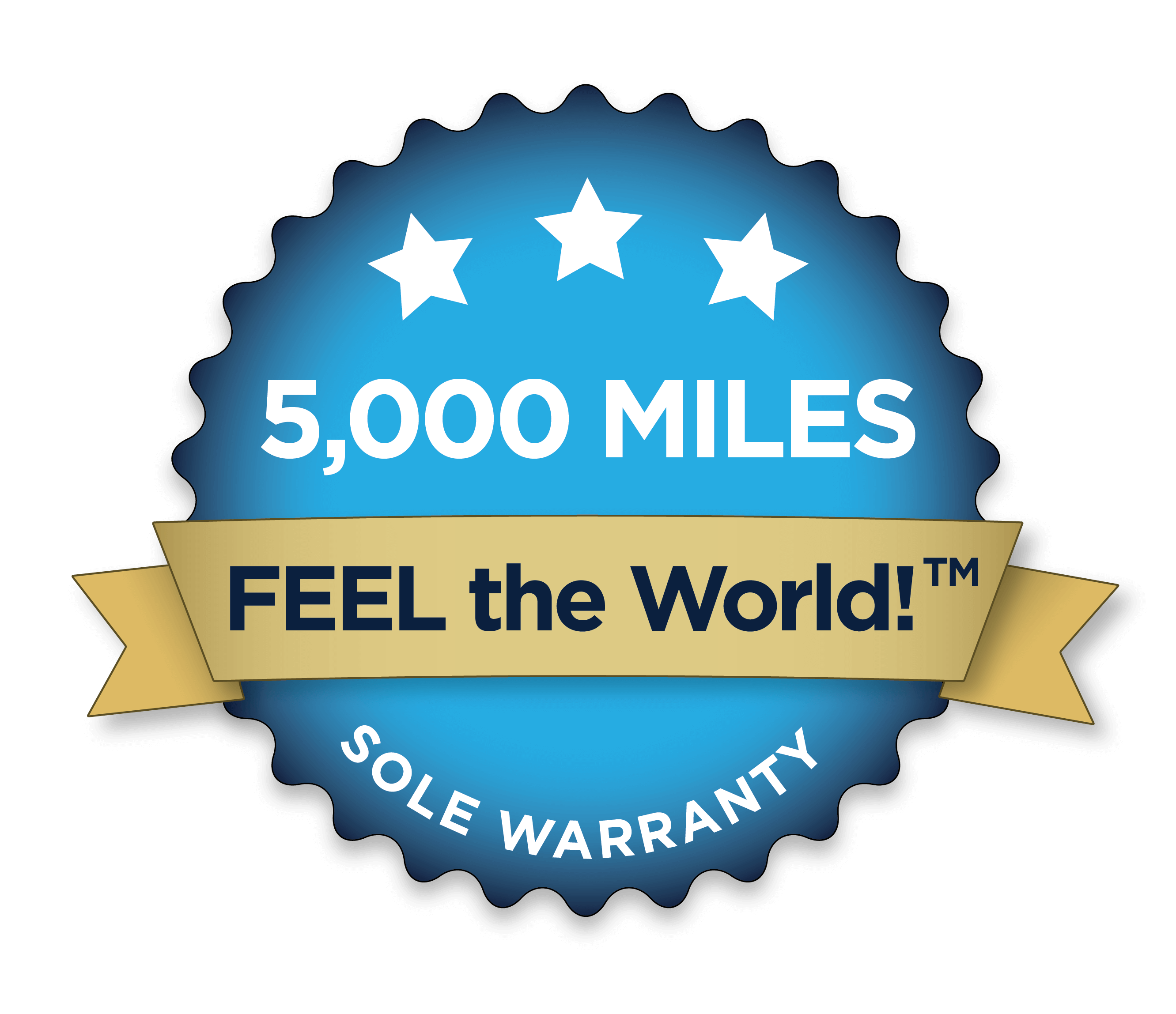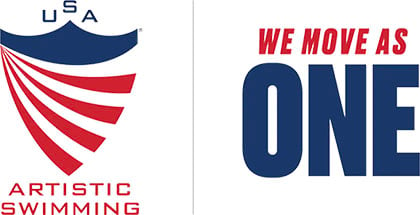How to Run Barefoot: Techniques to Get Started
“How do I start barefoot running?”
“What’s the best book/course/coach for learning to run barefoot?”
“Can you show me what the best barefoot running form looks like?”
I get these questions a lot. And it’s a bit tricky to answer them for a few reasons:
- Frankly, if all you did was take off your shoes, go for a run, stop when it hurts, and experiment to find ways of running that feel light, easy and fun (which is the way running with natural form should feel), you would learn more than I, or anyone else, could tell you.
- Those of us who’ve observed barefoot runners and coached barefoot running are starting to notice the obvious: different runners have slightly different form. That is, when you look at the BEST runners, they have many things in common, but they’re not all doing the exact same thing. So, I don’t want to say something that isn’t going to be relevant for YOU.
- To be totally candid, I’m in an awkward political situation — as a guy who sells “barefoot-style” footwear, and who would like to have ALL the coaches referring their clients to me, I can’t single out one coach/book/technique over another (or one “under” another, either). I can tell you that if you listen to ALL of them, and then follow a bit of advice I’ll give, below, you’ll appreciate each coach for his/her unique contribution to your barefoot running form.
- Many runners aren’t aware of what their bodies are actually doing, so certain recommendations won’t be effective anyway. If I say to you, “don’t land on your heels,” and show you a video of how you’re “supposed” to land on your foot, you may be 100% convinced that you’re doing what I suggested, and then a video might show that you are totally heel-striking. In other words, what I say will be less important than what you learn on your own.
However, what I CAN do is offer some thoughts about getting started with barefoot running.
Tips on How to Run Barefoot
Here are my best tips on how to get started running barefoot, refining your running technique, and enjoying the benefits and fun of barefoot running
How to Getting Started
- Realize that the best coach you have is YOU and your sensations and whatever you can learn from watching video of yourself (especially slow motion video). In fact, you MUST become your own best coach, because no external coach will be there for every situation you’ll encounter as a runner. If you can’t listen to yourself, make adjustments in what you’re doing, and know when to STOP… no other coach will be helpful anyway.
- Start SLOWLY and build up. There’s no rush in making the transition to barefoot running. And there’s no way to predict how long it will take YOU.
- Run barefoot on a hard, smooth surface. These surfaces are best for learning because they give you the most feedback.
- Remember that barefoot running is a never-ending process. You can always improve.
Refining Your Barefoot Running Form
To be slightly more specific and technical, and tell you some of what you would discover on your own with enough time and attention:
- Aim for having your feet land “under your body” – more so than you’re probably used to. Landing with your foot out in front of you too much is “overstriding” and it’s one of the habits that most of us need to work to overcome. You may need to even exaggerate this to get the feel of it — put your feet “behind you” when you land. You won’t actually be able to do this, but if you try it will highlight what overstriding feels like… and the correct place to put your feet is probably somewhere in between.
- You want to land forefoot or midfoot. Do NOT reach out with your foot to do this; that’s the opposite of what you want to do. By the way, If you land with your foot underneath your body it’s almost impossible not to land on your forefoot or midfoot.
- You don’t need to stay on the balls of your feet and put extra strain on your calves and Achilles tendons. Once you land on the ball/midfoot, you can let your heel drop if it feels better to do that, and it will feel better/worse depending on whether you’re going uphill or downhill or on a flat surface, and depending on what speed you’re running.
- Don’t PULL your foot toward you, or PUSH it behind you… that’ll cause blisters as well as put extra strain on your hamstrings (pulling) and calves (pushing). Think, instead, about PLACING your foot on the ground and LIFTING it off. And lift by using your hip flexor. That is, think about lifting your foot off the ground by lifting up your knee, not by pushing off the ground.
- Un-Plop your feet. This is hard to describe, but many of us slam our feet into the ground, or wait for the ground to hit our feet. We plop them onto the ground instead of meeting the ground lightly. There are a lot of “cues” coaches use to teach this: Pretend you’re running on hot coals, or on thin ice, or trying to sneak up on a deer, or that your feet are wheels and you want them to touch where the wheel meets the ground, or that the ground is moving below you like a treadmill and you want to move your feet at the same speed as the treadmill. You will need to find your own way to feel this.
- Keep your core tight… when you run, your body is a spring. If you collapse in your midsection, you’re weakening the spring and making it less efficient and, therefore, making it harder to run.
- Pick up your cadence. Most people think 180 steps-per-minute is some magic number. It’s not. Some successful runners do more, some do less. The point of moving your feet faster than you’re probably used to is that it gives you less time to keep your feet on the ground… and that’ll help you learn to place/lift, “un-plop” and not overstride.
- LISTEN to the sound your feet are making… if you’re running loudly, if you make a lot of noise when your feet hit the ground, you’re doing one of the above incorrectly. This is true if you’re barefoot, in our barefoot shoes, or any other footwear. You can run quietly (not silently), and quiet running is usually a sign of good form.
- WONDER! When I run, I keep a question in my mind, “How can I make this lighter, easier, and more fun… and, sometimes, faster?” Then, I experiment and see what I can find.
Finally, and most importantly:
- REST. Bodies get stronger when you let them rest. There are no bonus points for not taking a day off.
- HAVE FUN! If it’s not fun, do something different. Try a different surface, a different speed, a different reason for running (compete if you haven’t before, do an obstacle course if you’re usually all about putting in mile after mile).
I’m sure other barefoot runners have additional pointers. Can’t wait to hear them.
Oh, and did I mention, barefoot running can be, should be, and IS (once you get it) FUN… don’t forget that!
Want to learn more about learning how to barefoot running? Watch this video below
The content of this post does not constitute and is not intended to be a substitute for professional medical advice, diagnosis or treatment. Always seek the advice of a physician or other qualified health provider with any questions or concerns you may have about your health or a medical condition.








 Fostering honest and responsive relationships between businesses and consumers.
Fostering honest and responsive relationships between businesses and consumers.














Great post! I’ve tried barefoot running and find my posture improve…I gotta look into some invisible shoe gear!
I felt the World and it hurt. This is ridiculous.
Maybe you need to work up to it more slowly 😉
this is funny lol
hahaha!
but i wanna try to run on barefoot and try to feel the earth too underneath my feet! 🙂
I have been suffering from calf pulls and achillies tendon pain for years. It seems like every time I start to see results, I get hurt. This Jan I really hurt my Achilles, so about a month ago I took off my shoes and started running barefoot.
On a whim, last week I did an 11 mile “Tough Mudder” trail run without shoes–yes my feet became sore after about 8 miles, but I finished without any achillies pain. All my soreness was due to their softness, and by Wed. this week it was mostly gone.
So tonight I am starting from the ground up with my new invisible shoes; I’ll try to post back on a monthly basis with my progress.
The blister and the noise are the same problem and have the same solution — don’t overstride.
The big suggestion is: knowing what I just said, and knowing that it’s possible to run quietly and pain-free, take SHORT runs and experiment with your gait. Wonder, “What can I do differently that makes this quieter, easier, lighter?”
And check out http://www.xeroshoes.com/blister
I have tried running completely barefoot a few times over the last few months, never going more than 1/2 a mile, and ALWAYS getting blisters between my 1st (or big) toe and the 2nd. On a whim, maybe even after reading up on the subject some more, I tried it again, picking up my cadence and my feet and went a full 3 miles without a scratch. I then ran 1.5 miles a few days later and a couple of days after that (today) ran 3 miles in some huaraches I made myself out of carpet scraps 😉
My question is: if I’m not hurting AT ALL and in fact feel GREAT about barefoot running, can I transition too quickly?? I’m already taking a day or two between BF or minimalist runs if there’s any lagging soreness, but other than that I prefer BF to shod already.
Thanks and God bless.
If everything feels good, then simply add a BIT of distance the next time and see how you feel. If you feel good, stick with that distance or try a bit more on your next run. Use what your body tells you as a guide.
The joke of course is that the only way to know you did too much… is by doing too much. 😉
You want to avoid that if you can, but most of us overdo it at some point.
Thanks Steven.
You guys made the right decision on Shark Tank btw. Those guys are more actors than investors from the looks of it anyway… ;D
I assembled my huaraches, but I think the flopping sound is from the shoe hitting the ground, not the shoe slapping my foot… Should I tighten them? Or just try to run quieter? I feel great when I go out with xero shoes or without shoes at all, just came in from a one mile county road run. Love this site!
Hey, Nick.
Check out http://www.xeroshoes.com/slap — and, yes, it’s the way your foot is hitting the ground. 😉
I’ve read research that suggests wearing shoes your entire life will lead to hallux valgus, or your big toe pointing at an unnatural inward angle. If I start running regularly in Xero Shoes, will my big toe straighten out?
Not surprisingly, I’m not a doctor and I can’t make medical claims. And not having seen your feet, I can’t even give an opinion based on my experience. Similarly, I’d have to see you run to get a sense of whether you may be doing something helpful or not.
I do know that some people who’ve reported changes in hallux valgus both from being barefoot and in our shoes as well as using toe straighteners (which are hard to use IN shoes, and which we’ll soon be selling). But, again, I can’t extrapolate from their experience to yours with such limited information.
I never knew they had a stupid name for this ugly look. I used to wear Florsheim Wingtip Imperials and other pointy boots that were “tight and cool.” I made a middle toenail thick because it was cramped in the shoes and socks. Now, minimal feet covering/protection has softened the nail. This is after 57 years of living. I am now 58! Pressure, lack of air flow and friction are our worst enemies, IMO based on experience. I was going to develop my own toe straightener, but, you have it all under control Steven, so, I will wait on you. Bill is GREAT! We chatted today. He is very enthusiastic about the company. Talk to you soon. Art K
Ive just had my xero shoes and started to use them on the treadmill ie 10 min before and 10 after my run with shoes on. When I decide to venture out I think i would be better to start off in shoes and change when I get off road what would be the best way to carry shoes without them bouncing on my back ?
Wow, that’s a question nobody has asked before… 😉
If your shoes are light enough, I’d use them as “hand weights” and just carry them. The advantage to doing this is that it’ll be easier if you keep your hands “high” (bend your elbows so your hands are near your arm pits). This is an efficient way to carry your arms, so it could be good training.
Otherwise, the only place they wouldn’t bounce is if you tie them on your head like a hat 😉
Tie the shoes together with one lacing from each shoe. Than use the other lacings to close the loops out like a belt around your hip. This will allow you to keep the shoes on your body at a tightness you can control while also minimizing bouncing.
Question for you, Steven. I’m a college student in Saint Paul, MN, and it gets real cold up here. I ran all last winter in xeros, and my feet got used to it, to a point haha. It wasn’t the cold that hurt (running kept my body warm enough past mile 1), but the dryness at -45F just cracked the bottoms of my feet from heel to toe. Any suggestions for making a cold-weather huarache to lessen that?
God Bless, brother.
I’m not sure that we can do anything about dryness. See http://www.xeroshoes.com/cold for some cold-weather info. I haven’t used any skin conditioning oils for cracking (because I haven’t had that problem), but I hear that it works.
you could try
http://musherssecret.net/
I use it on my dog’s paws and it’s great.
Just shut up and run!
Pain, stop, rest. Then Re-start.
I ran barefoot when i was a kid. “Civilisation” entered a bit late in life, so have been wearing shoes all these years. I have started barefoot running a year ago. Now i can run 10Ks.
I have just ordered Xeros. I am running a trail race in a month’s time. The course is pretty harsh. I tried walking barefoot and it is very difficult at this stage. Hoping Xero gives just enough protection and no more!
Good luck in the race. Can’t wait to hear how it goes.
I’ve been suffering from chronic shin splints for more than a year. About two and a half months ago, after trying everything else, I started really trying barefoot running. I started very slow, from walking the first few weeks to running a quarter mile, to now running for miles. My stride, foot landing, and cadence is totally changed and my feet and the rest of me feels great, but I’m still getting shin splints when I get to about three miles. Any suggestions or tips? I’m at the end of my rope.
Hard to say anything specific without seeing videos of you running, but my 2 thoughts are:
1) Do less. Stop WELL in advance of the point where you start getting pain. Build up your distance more slowly.
2) As you’re running, ask yourself, “How could I do this with LESS effort and more relaxation?” Then experiment and see what you find. For example, think about (and try to) lift your foot off the ground rather than pushing off the ground with your foot.
Keep me posted
I used to play occasionally ice hockey with without skates using normal shoes. Now I have noticed there is something similar in striding barefoot. I might even try to run on ice again just refresh.
The thing is that on the slippery surface the contact on the surface needs to be directing the movement mostly forward, otherwise you just start to slide.
Actually, you want to build up speed when it’s not slippery, and then on the slippery surface have most of the force going DOWN. Paradoxical as that may sound, that’s what keeps you moving forward at the speed you were already at, without causing more slipping.
There used to be a video showing a guy sprinting across an ice rink as proof that, at full speed, most of the force you apply to the ground is in the vertical direction.
I just started barefoot and have been having some ankle pain. What should i do?
Noah,
I’d need WAY more information than that to give you a meaningful suggestion.
I’d need to see how you’re landing, know how much distance you’re doing, find out what kinds of surfaces you’re on, and a bunch more.
If you’re only having pain on one side, though, read http://www.xeroshoes.com/blister. While that article is about blisters, it’s more about one-sided problems and how to fix them.
Otherwise, REST until the pain is gone, and cut down the amount of running you’re doing to an amount that you can do pain-free. Then build up distance/frequency SLOWLY.
You may learn quite a bit if you have someone video tape you’re running, too. (And we’d be happy to look at those vids.)
My other comment seems to have disappeared. I went for my third barefoot run the other day. Yes, I went farther than 200 yards but it seemed okay. At the end I was tired but nothing hurt. The next day I went for a shod 2 mi run bc I wanted to keep up my mileage while transitioning from shod to barefoot/xero. I had previously tried doing my barefoot run for a short distance and then putting my shoes on but that didnt work at all. I only tried it once but I was so sore. Everything hurt from the knees down once I put my shoes on. I had to stop and walk a lot during my short 2.5mi run. I felt stuck bc I couldn’t go farther barefoot but then couldn’t run shod either.
So then I thought, I’ll do my shod run on opposite days from my barefoot. So I did my barefoot and weights. Then the next day went for a 2 mi shod run and it seemed okay. I was a little sore but nothing crazy. Except then the day after that HOLY WOW. SO SORE. My calves were knots and my heels feel bruised. So now I’m stuck taking a few days off and I’m confused. How can I keep up any sort of mileage while transitioning?
And do my legs and feet hurt bc of my barefoot run? Or bc of the shod run? I know during my shod run I was heel striking with a long stride but I was having a hardtime doing barefoot form w my shoes on so I basically just did what I could. I felt like my barefoot form had improved a bit though I’m sure I’m still over stridingwhen barefoot.
I’m just not sure how I can keep up any sort of mileage w all this happening. Thoughts?
Thank you!
Your comments are “disappearing.” After you post a comment, there was a message that said your comment was awaiting moderation. And since I’m the moderator, and you posted your comment when I was sound asleep, it’s only now that I was able to approve it.
Sometimes soreness takes 48 hours to kick in. So, I’m not clear if you’re saying that the barefoot running made you sore, or the shod running made you sore.
Either way, though, the answer is basically the same: RELAX and experiment with doing less. See this post: https://xeroshoes.com/barefoot-running-tips/barefoot-calf-pain/
Steven, I’m planning on ordering this friday a pair of Amuri Cloud, my goal is to run a half marathon on trail wearing them, the marathon is in 11 weeks. I’m totally new to barefoot/minimalist running, never done it. I just ordered a pair of merrell ascend glove last week (before I found out about Xero Shoes, sorry, haha). And I haven’t even ran 1 mile with those (I should receive them today), my stupid question is: Should I start with the ascend glove and then mix it with the xero shoes or can I just start at once with the amuri cloud. I’m running on a rooty/hard packed trail with elevation changes through it. Oh! I forgot to mention I’m not only new to barefoot running, I’m new to running in general, I just started running 6 months ago, I’m 41 years old and all I used to do was mountain bike, at least 3 times a week. I used to only run 3 miles every 6 months or so with my wife to do something with her, but I hated running so much I even bought a shirt that says “Running sucks” just to mess with my wife…. But my wife loves running too much that I had to do it more often to share something with her and we decided to do a 5k mud run 6 months ago and from that point I got hooked, I started training for that mud run and something inside just changed, now I run at least 3 times a week for 3-4 miles on the bike trail I always rode, I’m still riding 2 times a week, but I came to love running so much in so little time that I myself don’t believe it. And just 5 days ago I stumbled upon barefoot running and I just know is the way to go. Just by reading about it I already love it, it makes so much sense. I’ve read many of your articles, about transitioning, time, form and all that I don’t even remember what I’ve read haha. I just want to do it, and would really like to run that half marathon with the amuri cloud. I already hate those 10000000 mm heel under armor I have haha. I’m using Hal Higdon’s 12 week program to prepare for it. 3-4 miles 3-4 times a week and 1 long run a week going from 4 miles increasing weekly to 10 miles. But since I’m new to running maybe that’s not a bad thing and could just you know make it easier starting with barefoot. Sorry it got so long. Did I even asked the question? Oh yeah! So, Amuri Cloud at once or start with the ascend glove or mix it?
Hi Hector,
First of all, while I’m a fan of having goals, don’t be attached to your goal of running a 1/2 marathon in either Merrells or Xeros in 11 weeks.
Why?
Because you don’t have enough information to know if you’ll have made the transition from regular shoes by then.
You may. Some people make the switch without a hitch. Others take more time. You don’t know yet where on that spectrum you are, and it’s better to be realistic than to stick to an idea about the way you want it to be.
That said, if your goal is to wear Xero Shoes, then you should be splitting your time between your regular footwear and Xeros (gradually adding more time in your Xero Shoes). There’s no such thing as a “transition” shoe, or something in between huaraches and regular shoes… rather, there are things ADVERTISED as transition shoes, but when you feel the difference between the most minimalist shoe and Xero Shoes, you’ll realize there’s no comparison.
Now, that said, you’ll also want to experiment on the terrain on which you’ll be running. We have LOTS of trail runners in Xero Shoes. But I also know many trail runners who have a different style of attacking the course — they don’t want to feel anything, or pay attention to where their feet land, or make any changes to how they move on the trails. That’s fine. Different strokes and all 😉
For them, I advise, “Find something that works for you, then.” Again, stick with reality rather than our preferences for how reality should bend to our will 😉
That help?
Yes Steven, that helps a lot! I will try to run 1 mile out of the 3 miles runs during the week to see how it goes, or maybe 1/2 a mile only. What’s usually better? Going barefoot at the beginning of the run or at the end?
Thanks a lot again!
Better to start barefoot (or in Xeros) when you’re fresh.
And better to start with LESS (much less) than you think you can handle. It takes less time to work up your mileage than it does to deal with doing too much, too soon. 😉
Got it! Thanks for the advice.
OK, I will try with less, even though is hard to resist the temptation 😉 It’s like putting a piece of cake in front of a kid and telling him “eat just a little, too much sugar is bad for you” hahaha! Thanks man! I will do 1/4 mile at the beginning of my 3 miles runs.
Mmmm…. cake.
😉
You are right on the best teacher is experience, thank you for clarifying cadence for me
I agree with most of this, but have a point to make about “Un-plop your feet”. The two things that all good runners i.e. fast for a given distance, have in common is minimal ground contact time, and minimal sagittal plane acceleration. Speed is a function of foot-strike rate * stride length; so fast, hard foot-strikes are what we’re after. If we want to run fast, then slamming our feet into the ground is exactly what we want to do. But if you have good ankle mobility, and strong elastic tendons, then you won’t hear as much of a ‘plop’ because the ankle acts as a spring. This is exactly why exercises such as heel-drops and pogo are so helpful for increasing running efficiency; they, respectively, strengthen while increasing range of motion, and teach the ankle to function elastically at relatively large angles of dorsiflexion. If you observe elite runners, some forefoot strike, some mid-foot strike, some even heel-strike, but they all complete the stance phase with neutral to dorsiflexed ankles which enables rapid compression of the ankle joint and rapid elongation of the achilles tendon. But when novice runners run, they tend to either heel-strike and plantarflex, or land plantarflexed, both cause an exaggerated rocking motion at the ankle, long ground-contact time, and a large negative acceleration in the sagittal plane. Heel-striking and flopping the ankle forward into plantarflexion causes a loud clapping sound. But many runners who have this problem, when told to land mid to forefoot, will develop the opposite problem of landing in plantarflexion. The “plop” goes away, but form is just as bad, if not worse than before. That’s why, if you’re going to give the forefoot cue, it’s important to also give the “toes up” cue.
Agreed that excessive plantarflexion is a problem.
Interestingly, if you look at almost all sprinters, though, you’ll see that despite years of “toes up” cues, they make ground contact plantarflexed. But it’s not excessive, and it’s under the COM. So the sound is lighter, even though the ground contact forces are through the roof.
Check out http://www.youtube.com/watch?v=YA3PNFIhUeg
I think there may be 2 or 3 causes of “plopping” … excessive plantarflexion combined with overstriding (negative acceleration), heel-striking followed by plantarflexion, and too-stiff limbs at ground contact.
Sprinters, yes. Sprinting 100, 200, 400 m events you see significantly different mechanics than in even the shorter middle distance races. Sprinters extend the knee and ankle more upon landing in order to lengthen the lever-arm of the hips and increase horizontal impulse. A slight increase in GCT can be more than made up for by the increase in stride length, but that’s not efficiency, that’s brute force. Don’t get me wrong; they are running efficiently – for that speed – but they are expending an enormous amount of energy for a relatively small increase in speed.
If you want an example of mechanical efficiency watch the strides of Kipsang, or better yet Sammy Wanjiru, runners who keep up about 3/4 of the speed for over 400 times the distance.
Hi Steven, I’ve been working on improving my running form for a couple of months now, and am making progress. Running both barefoot and in my Xero shoes. One thing I’ve been doing is wearing my Xeros (or a pair of Merrell Vapor Gloves when I need something less obvious on my feet… Sorry! 🙂 ) pretty much exclusively, including hiking on all sorts of terrain, walking, and very slowly building up my running distance. My feet and lower legs feel much stronger and more resilient than they did a couple of months ago!
I wanted to mention something I noticed today as far as training cues. It seems like going down stairs pretty accurately replicates much of the good form I’m trying to achieve when I’m running. I move down the stairs by leaning forward rather than pushing off with my foot, I land very much mid-foot directly under my center of mass without over-striding (over-striding seems almost impossible going down stairs…), as I land mid-foot on the next step, I very naturally lift my rear foot off the step without pushing off and pull that leg through by flexing my hip and knee, and I can maintain a high turnover rate going down stairs. Not sure if it’s a valid cue, but I’ll be experimenting with it when I run tonight… 🙂
Love my Xero shoes!!
That’s an interesting cue. Paradoxically, running UP stairs has a similar value, in that it’s hard to run up stairs unless you put your foot under your center of mass, and you’ll almost always land either mid-foot or forefoot.
Keep me posted!
Hey Steven! Im a high school cross-country runner who read “Born to Run” by Christopher Mcdougall and really got interested in barefoot running. my one concern was that i have been known to overpronate, and wondered if this would effect my transition into barefoot running at all, or if i would run into problems because of this.
First, do you have an actual *problem* for which “overpronation” was accurately diagnosed as the cause? Or did someone simply tell you that you “overpronate?”
I put the word in quotes because there’s no actual definition for the “over” part of pronation, and pronation is a natural movement pattern of the foot and ankle.
People in shoe stores are trained to identify this false condition and then, wouldn’t you know it, prescribe footwear designed to “correct” the problem.
All that said, when you run with a forefoot or midfoot strike, it’s harder to excessively pronate because your landing in stronger position, biomechanically.
So, while I haven’t seen you run, and I’m not a doctor and, therefore, can’t make a diagnosis or prescription, I have lots of reasons to believe that you would be okay. Nonetheless, the most important thing would be for you to start slowly, monitor your form carefully, and see what you discover.
(And keep us posted, Eli!)
Thank you so much! And yes someone in a shoe store told me I “overpronated” and then shoved my foot in a crazy support shoe(and ignore my second comment that was an accident)
Call me psychic 😉
(I took care of the duplicate comment).
Hey Steven! Im a high school cross-country runner who read “Born to Run” by Christopher Mcdougall and really got interested in barefoot running. my one concern was that i have been known to overpronate, and wondered if this would effect my transition into barefoot running at all, or if i would run into problems because of this.